




In the summertime, the canals, waterways, and harbors of Copenhagen teem with life. Over the past two decades, a lot of effort has been invested into cleaning up and transforming the area such that Copenhagen is now one of few European cities with harbor water clean enough to swim in.
As a result, centrally located harbor baths and designated swimming zones have popped up all over the city – from Sandkaj in Nordhavn all the way down to Sluseholmen in the south. Along the canal, on both sides, swimming platforms have been installed. All harbor baths are free of charge, and most are located minutes away from restaurants and cafés.
Copenhagen harbor stretches about 12 kilometres from south to north with a public waterbus servicing the length of the harbor. In an effort to keep the water clean, it’s the first city in the world where public transport on the water is 100 percent electric.
Even though the population of Copenhagen is a mere 600,000, it is estimated that 2 million people use the harbor every year, including 230,000 swimmers. In 2019, CNN declared Copenhagen the best bathing city in the world, and in recent years, Copenhagen has hosted the Red Bull Cliff Diving World Series five times. Watching skilled divers from around the world launch themselves into the harbor from the rooftop of the Opera house is

spectacular and not to be missed if you happen to time the next event.
If swimming isn’t your thing, or if you’re visiting during the colder months, you can still kayak, paddleboard, or boat around in the harbor. There are large canal boats that offer sightseeing tours as well as more intimate options. From GoBoat you can rent electric motorboats at affordable prices for up to 8 people. No boating license required. The boats are designed to be slow, about 3 knots (5-7 km/h) and silent and often feature a picnic table in the middle for an enjoyable couple of hours or day on the water. Whichever option you chose, if you’re a first time visitor, don’t miss the following sights on or near the water.
Whether you’re a first-time visitor or a veteran, here’s our best tips for how to enjoy 72 hours in Copenhagen and its surroundings.cafes. Three of the previous homes of famous Danish fairytale writer Hans Christian Andersen are also located in Nyhavn (no. 18, 20 and 67). It is a great place to stroll, catch some live music, or stop for a beer – in the daytime or at night.
Denmark. The hippie micronation has its own flag – a red banner with three yellow circles representing the dots in each “i” in “Christiania” and has become a popular tourist destination.
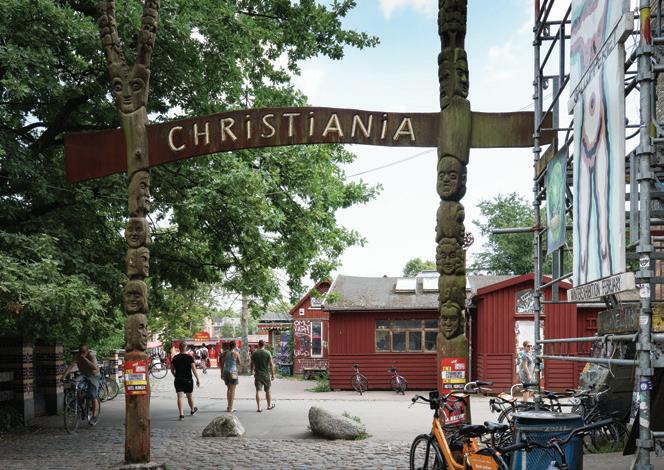
In 2019, the CNN referred to it as “a weed-smoking Disneyland”. While it can feel a bit overcrowded in the summertime, if you’ve never been, it’s worth a quick stop.
Reffen
Unveiled on 23 August 1913, Den Lille Havfrue, as she is known in Danish, is arguably Copenhagen's most famous tourist attraction. She was a gift from Danish brewer Carl Jacobsen to the City of Copenhagen. Jacobsen watched a ballet performance based on the fairy tale at the Royal Danish Theatre in Copenhagen and was so captivated by the character that he commissioned artist Edvard Eriksen to create the sculpture, made of bronze and granite. The Little Mermaid sits in the water at Langelinie Pier, welcoming travelers to Copenhagen harbor.
Known for its beautiful old houses, Nyhavn is a great place to join one of the many canal tours that allow you to explore Copenhagen from the water.
In the olden days, Nyhavn was a commercial port where ships from all over the world would dock. As such it turned into a popular hub for sailors who would frequents its many pubs, alehouses, and brothels.
Today, the area remains a hub for nightlife and restaurants. The colorful houses of the old port have been renovated and many have been transformed into restaurants and
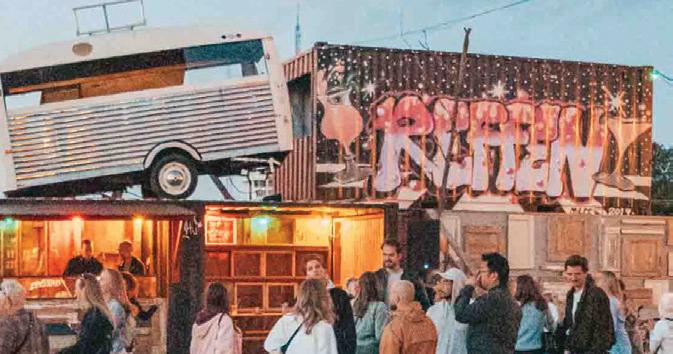
Christiania, also known as Freetown Christiania, is a breakaway anarchist commune in the heart of Copenhagen. First established in 1971 when a group of hippies, junkies, and outcasts set up a permanent squat in a former military base, over the years it developed into a self-contained community that rejected state control.
Today, Christiania, and in particular Pusher Street, remains a place where drugs are openly sold and consumed even though this is illegal in
End your day on the water by heading to Reffen, Copenhagen’s street food market and outdoor party area at Refshaleøen. Here, you'll find more than 50 start-ups in the form of food stalls, bars, and creative workshops. 4000m2 of the facilities are located right on the water so you can enjoy your dinner and drinks in a sun chair with front-row views of Copenhagen harbor, and even squeeze in some more swimming if you haven’t had enough.

Tivoli Gardens, often known simply as Tivoli, is a historic amusement park and garden in the heart of Copenhagen. Even if amusement parks aren’t normally your cup of tea, visiting Tivoli is a must. Here’s why.
InDenmark, the amusement park culture dates as far back as the 1500s. Just a few miles north of Copenhagen sits Dyrehavsbakken, or simply Bakken. In 1583, a natural spring was discovered here, and residents of the capital flocked to the area to sample clean water, a commodity in short supply in Copenhagen at the
time. The large crowds brought with them entertainers, performers, and vendors, giving birth to the world’s first amusement park. Today, Bakken features free entrance (visitors pay for rides only) and many modern rides, but despite being the world’s oldest park still in operation, it cannot rival the historic charm that Tivoli
The sculpture of The Little Mermaid was inspired by Hans Christian Andersen’s famous fairy tale by the same name. Christianahas managed to preserve.
Tivoli Gardens opened on August 15, 1843, and is the second-oldest amusement park in the world. The founder, Georg Carstensen, allegedly convinced King Christian VIII to rent him the necessary space by telling him that “when the people are amusing themselves, they do not think about politics”.
From the very beginning, Tivoli included a variety of attractions including mechanical amusement rides, exotic buildings, flower gardens, restaurants, and cafés.
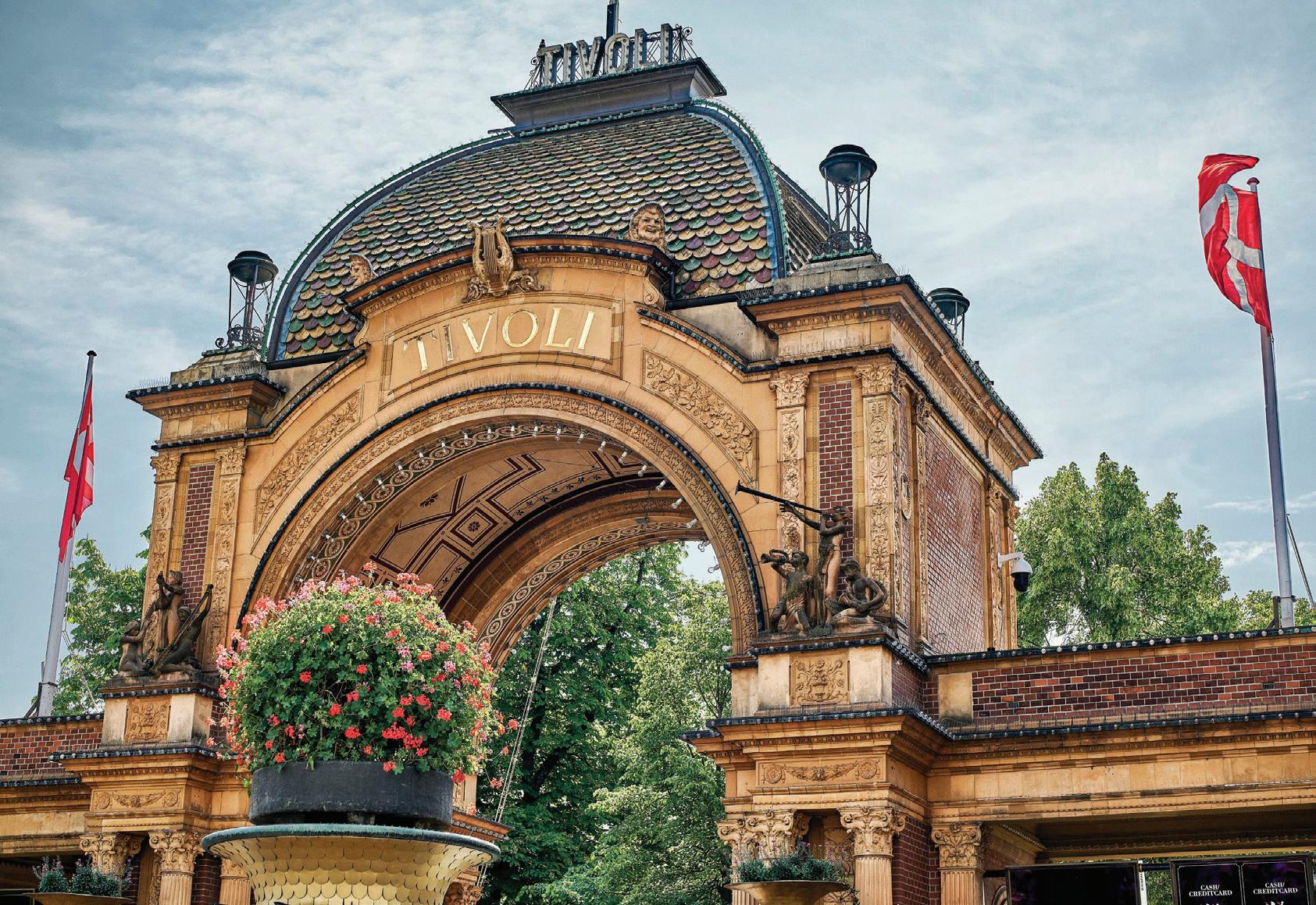
In 1874, Vilhelm Dahlerup (the designer of the Royal Danish Theatre) created an open-air, Chinese-style pantomime theatre, which is still in use at Tivoli. Conceived to host Italian pantomimes introduced to Denmark by Giuseppe Casorti, the theatre features a famous mechanical front curtain that unfolds like a peacock’s tail (and requires five people to operate it). Today, it also serves as a venue for ballet and modern dance, but the Italian Commedia dell'Arte tradition for which it was constructed has been kept alive with daily performances featuring classic pantomime characters such as Harlequin.
Composer Hans Christian Lumbye, who became known as the “Strauss of the North”, was Tivoli's musical director from 1843 to 1872. Many of his compositions were specifically com-
posed for or inspired by the gardens, such as “Salute to the Ticket Holders of Tivoli”, “Carnival Joys”, “A Festive Night at Tivoli”, and “The Champagne Galop,” written to celebrate Tivoli’s second anniversary in 1845.
The Tivoli Symphony Orchestra still performs many of his works. Tivoli Concert Hall features some of the top names in international classical music, the venue hosts the Copenhagen Jazz Festival, and there is a live music series known as Fredagsrock (Friday Rock), which in the past has featured artists such as the Smashing Pumpkins, Sting, the Beach Boys, Pet Shop Boys, and Kanye West.
In addition to all this, there are of course rides as well. Modern attractions include Vertigo, voted Europe’s Best Ride in 2014, which will turn you upside down at 100 km/h, but Tivoli’s best-known attractions are the old classics. Rutschebanen also called Bjergbanen is a wooden rollercoaster in operation since 1914, and one of only seven rollercoasters worldwide with a brakeman on board every train, manu-
ally braking to prevent the rollercoaster from gaining too much speed on the descent.
Throughout its history, Tivoli has impressed artists and entertainers from near and far. Fairytale author Hans Christian Andersen was one of Tivoli’s first guests and the beauty of the gardens inspired him to write “The Nightingale”. Walt Disney visited the park several times in 1951 for inspiration before opening Disneyland in 1955. The park’s existence has even left a lasting mark on the Scandinavian languages as the word “tivoli” has developed into a synonym for “amusement park” in Danish, Swedish, Norwegian, and Icelandic.
Tivoli Gardens is open between mid-April and the end of December and offers a historical ambiance and romantic allure that no other amusement park can rival. Reserve a day to explore the park and the nearby pedestrian street of Strøget, Copenhagen’s most famous shopping street, with unique boutiques and specialist shops branching off in all directions.
Hop on the train – or your bike – and head north. Not far from Copenhagen you'll find Denmark's best art museum, set on a stunning beach, as well as the Elsinore Castle of Hamlet fame.
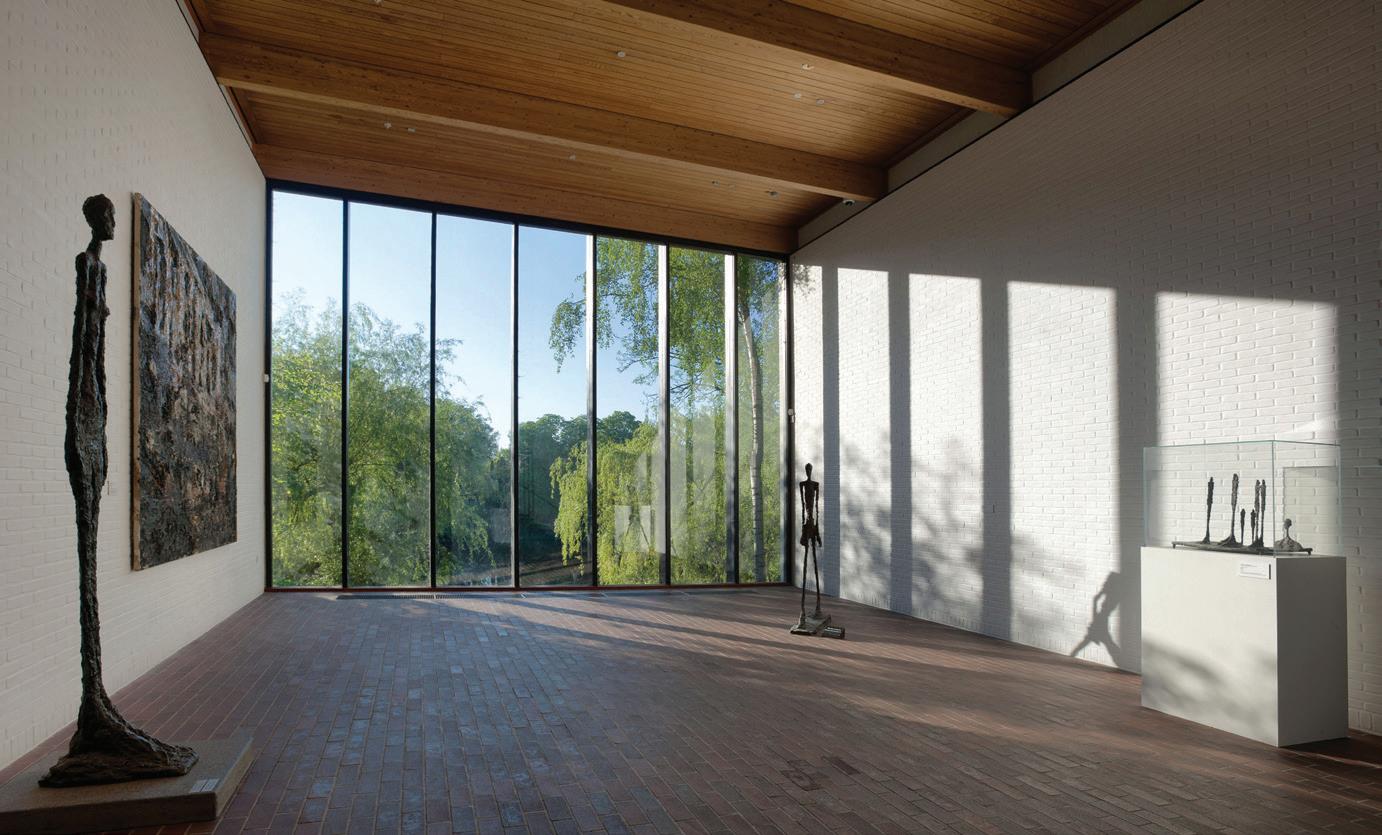
is only four kilometers wide, is the gateway to the Baltic Sea and thanks to Kronborg Castle, it was entirely controlled by Denmark from 1429 to 1857. Some 1.8 million ships passed through Øresund during this period and all of them had to pay a toll at Kronborg Castle.
In the 1420s, Eric of Pomerania built the first castle, known as Krogen on this strategically important site.
Is there a better place to ponder Shakespeare’s eternal question to be or not to be, than in lush park, overlooking a white sand beach with turquoise waters, and surrounded by world-class art?
In Humlebæk, about 30 minutes by train or 2 hours by bike from Copenhagen, sits Louisiana Museum of Modern Art, home to one of Scandinavia’s largest collections of modern art. It contains more than 4,000 artworks dating from 1945 to present day within virtually all genres, emphasizing painting and sculpture. However, only selected works are continuously on view. In addition to the permanent collection, the museum features up to ten major exhibitions annually.
That said, it’s the combination of art, nature, and architecture that makes Louisiana a unique experience and destination. The beautifully landscaped park serves as the setting for a large sculpture collection.
The views of Øresund that frame the artworks are spectacular and there
is a gorge down to a white sand beach with turquoise waters. But best of all, the stunning surroundings are not just for looking at; they are designed to be enjoyed and lived in. Families are splayed out on their picnic blankets eating lunch, someone is napping in the shade of a tree, kids are swimming in the clear waters. Louisiana is perhaps the only art museum in the world where you beat yourself up if you forget your swimsuit.
While you can easily spend a full day here, if this is your only day in the area, make sure you save enough time to visit Kronborg Castle. Immortalized as Elsinore in William Shakespeare's play Hamlet, Kronborg Castle is one of the most important Renaissance castles in Northern Europe and a short train ride (or 30 min bike ride) from Louisiana Art Museum.
Kronborg Castle is located just north of Helsingør, at the very tip of the island of Zealand, at the narrowest part of the sound between Denmark and Sweden. This passage, which
Using wealth from the collected tolls, in 1574, King Frederik II began the construction of the much more extravagant Kronborg Castle. Today, it is declared a UNESCO World Heritage site, famous for being one of Northern Europe’s finest Renaissance castles and – of course – for being the setting for Shakespeare’s play Hamlet. True fans of the bard should visit in August when the annual Shakespeare Festival takes place, featuring open-air theatre with the castle as a backdrop.
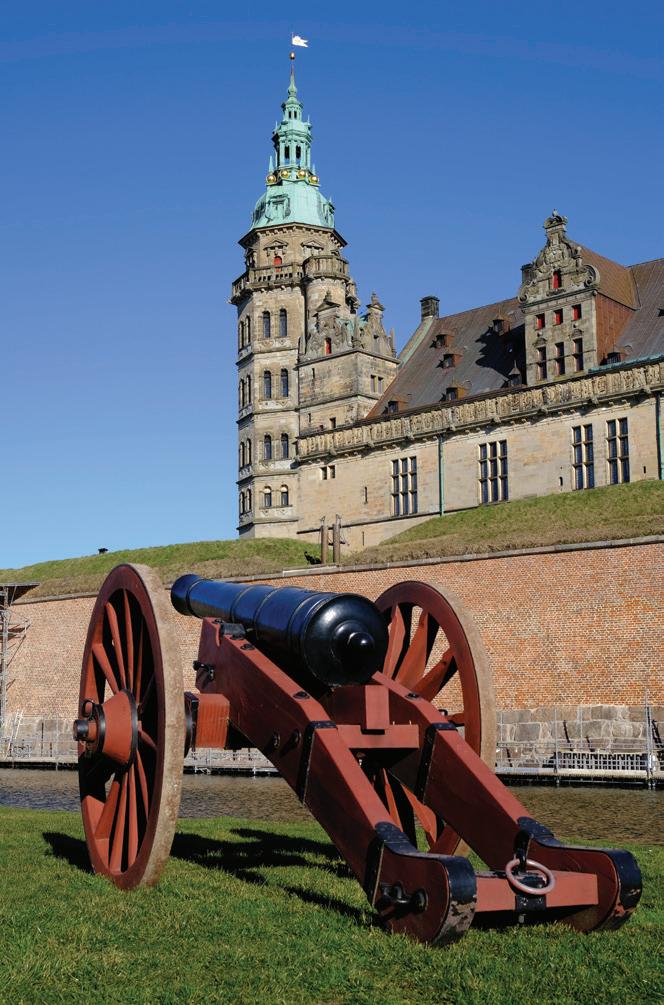 Giacometti room. Photo: Kim Hansen/ Louisiana Museum of Modern Art
Giacometti room. Photo: Kim Hansen/ Louisiana Museum of Modern Art
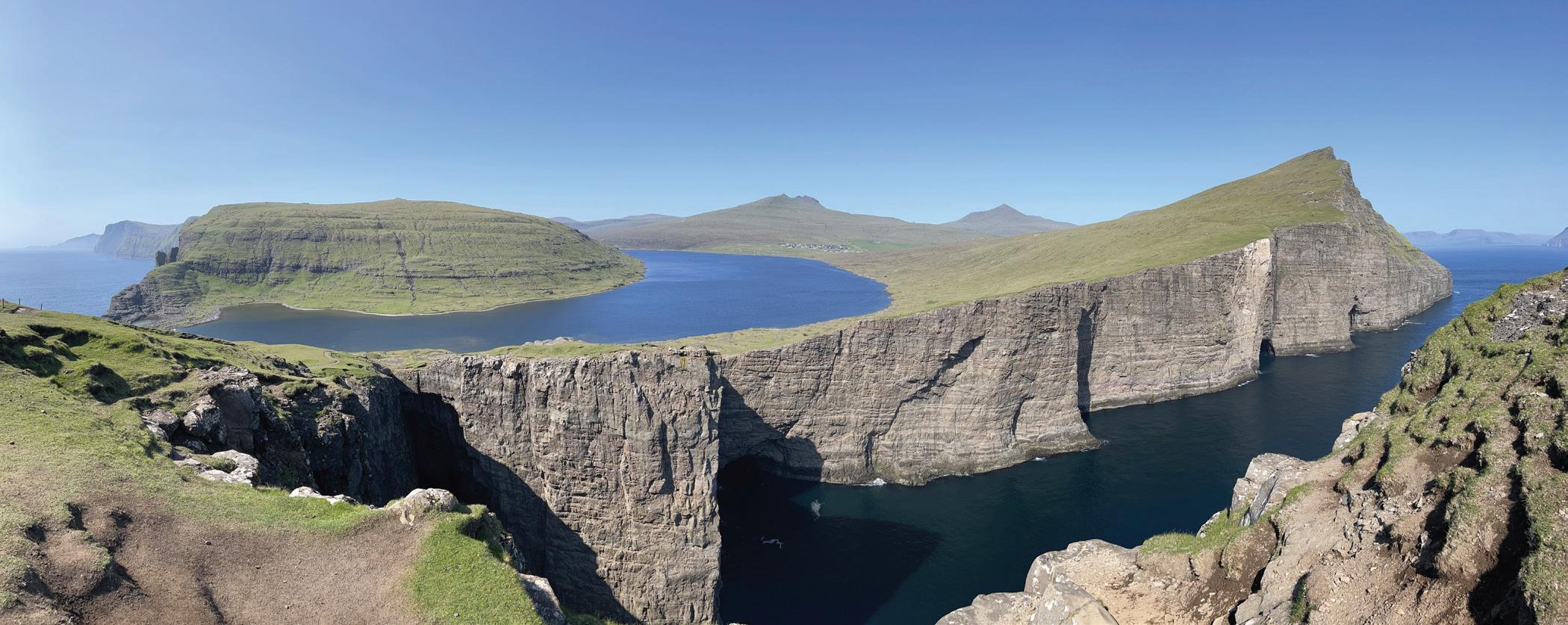
Since 1948, the Faroe Islands have been a self-governing region of the Kingdom of Denmark. With their stunning nature, unique culture, and welcoming people, the islands are Scandinavian gems that appeal to fans of the raw, untamed Nordic beauty.
By Kajsa NormanSituated in the heart of the North Atlantic, northwest of Scotland and halfway between Iceland and Norway, the Faroe Islands consist of 18 volcanic rocky islands characterized by dramatic cliffs and a jagged coastline spanning over 1,100 kilometres. The land is barren, almost completely devoid of trees and dotted with sheep. Literally translated, “Faroe Islands” means “the islands of sheep”, and it’s true – the 80,000 sheep that live here far outnumber the 50,000 human inhabitants.
The Faroe Islands have their own government, parliament, and national flag, but fall under the sovereignty of Denmark. The national language is Faroese, which can be traced back to Old Norse. The other Nordic languages are understood by most Faroese people, and English is widely spoken.
As the Vikings sailed west from Norway in search of new land, they came across the Faroe Islands (in addition to Scotland, Shetland, Orkney, the Hebrides, and Iceland). They named the Faroese capital Tórshavn after Thor, the Norse god of thunder. Today, it is one of the smallest capital cities in the world with a mere 13,000 inhabitants. However, despite its modest size, Tórshavn has a lot to offer.
Walking the Old Town, known as Reyni, feels like being transported in time as the neighborhood is dominated by old, black, tarred houses with white window frames and traditional grass roofs. Here, you’ll also find Tingnes, where the Faroese government sits, and which used to be a prominent meeting place for the Vikings in the olden days. Today, it is
used as the office of the prime minister as it is located near Logting, the Law assembly of the Faroese parliament.
The capital is also home to a small art museum with a lovely collection of Faroese art and the National Museum where you can learn about Faroese history and see Faroese artefacts dating all the way back to the Viking Age.
In the harbor, you’ll find Steinprent, a unique lithographic workshop run by Jan Andersson for the past 25 years. They feature works by many Scan-
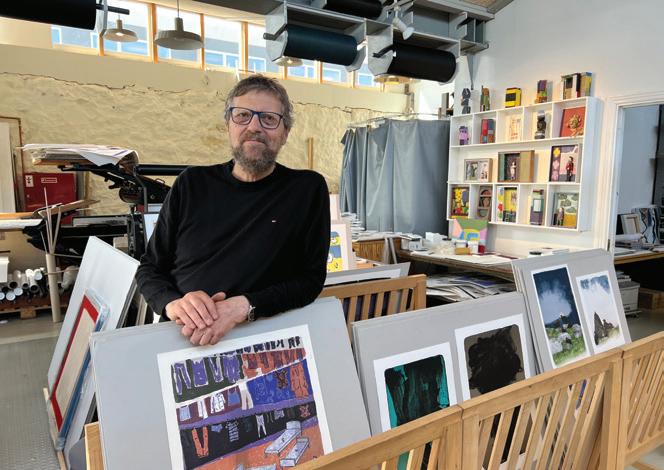 The mountains rise with their green, sloping fells divided by dark, stony crags, which give the mountains their layered look. The jagged protrusions are the remnants of massive layers of basalt laid down by gigantic volcanoes in the tertiary period some 60 million years ago. Each basalt layer represents one or more volcanic events. In between the basalt layers are bands of red tuff, which is the compressed ash, spewed out by the volcanoes between eruptions.
The mountains rise with their green, sloping fells divided by dark, stony crags, which give the mountains their layered look. The jagged protrusions are the remnants of massive layers of basalt laid down by gigantic volcanoes in the tertiary period some 60 million years ago. Each basalt layer represents one or more volcanic events. In between the basalt layers are bands of red tuff, which is the compressed ash, spewed out by the volcanoes between eruptions.
dinavian artists and have appeared in the New York Times. If you head upstairs, you can watch them work. In the small downtown area, you’ll also find charming shops featuring Faroese crafts such as handknitted, chunky, woolen sweaters.
Despite its small size, Tórshavn is home to a few nice restaurants and bars. Michelin-rated Koks has relocated to Greenland temporarily, but its two sister restaurants Roks and Ræst are worth a visit, offering tasting menus of Faroese specialties.
At the southernmost tip of Streymoy island, about a 15 minute-drive from Tórshavn, sits Kirkjubøur, the most important cultural heritage site in the Faroe Islands. During the Middle Ages, Kirkjubøur was the ecclesiastical and cultural center of the islands. It was here that the bishop lived and had a cathedral built. The Gothic Saint Magnus Cathedral is said to have been one of the finest churches in the Nordic countries when it was completed around 1330-40, and the impressive ruins of it still stand. One of the oldest inhabited wooden houses in the world can also be found here. The traditionally built log house is still used as a home by the Patursson family, who have lived there for 17 generations, and some rooms of it have been converted into a museum available to the public.
If you head north from Tórshavn to Vestmanna, you can take a guided boat trip and sail along Streymoy’s west coast to see the towering bird cliffs as well as the sea stacks that are home to guillemots, kittiwakes, fulmars, razorbills, and puffins. This is a great way to get up-close and personal with the various species of birds who live in the Faroe Islands. The boat sails into caves and through narrow straits, offering breathtaking views of the 700 m high sheer cliffs where thousands of birds breed every summer. The Faroe Islands are home to more than 300 different resident and migratory species and while the island of Mykines is the top destination for bird lovers, Vestmanna is a more accessible option well worth visiting.
North of Vestmanna, you’ll find the remote village of Saksun at the head of an old fjord. When the tide is low you can walk all the way out to the ocean. As with most hikes in the
Faroe Islands, you have to be prepared to pay a hiking fee. The Faroe Islands don’t have the right to roam that most other Scandinavian countries do. This means that most hikes take place on private land and some landowners ask a fee ranging from 70-500 DKK ($1070) to maintain trails. Old village paths, however, are free to hike.
A 20-minute drive from Saksun, near Haldarsvik village, sits Fossá, the largest waterfall of the Faroe Islands, measuring 140 meters. Its twin cascades fall directly into the sea and are particularly impressive after a heavy rainstorm.
The quaint village of Tjørnuvík is the northernmost location of Streymoy island and here the road ends dramatically in the ocean. Surrounded by towering mountains, the village sits above a lovely, sandy beach, known as a surfer’s paradise.
All connected by sea or land, the rest of the Faroe Islands are also easy to explore. Keep reading to learn about other island gems.

